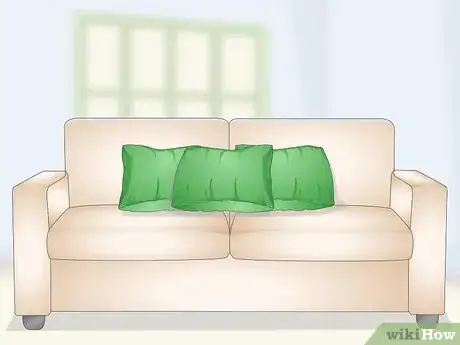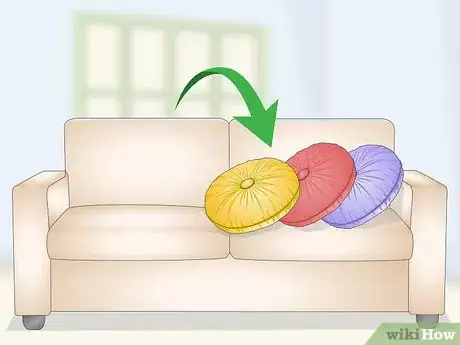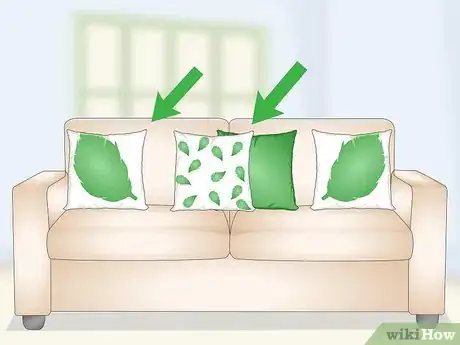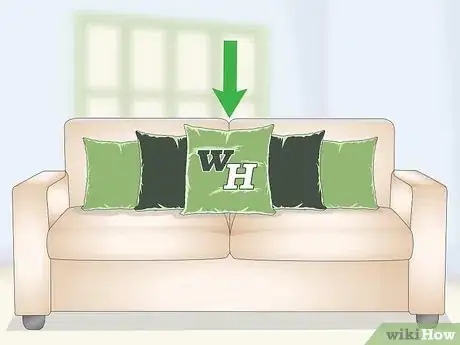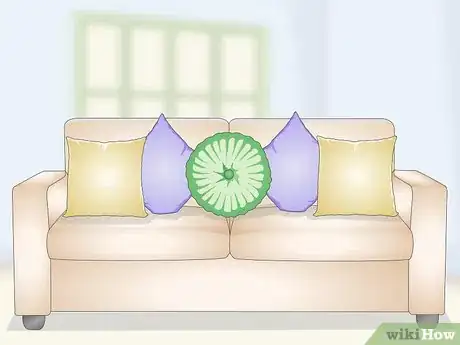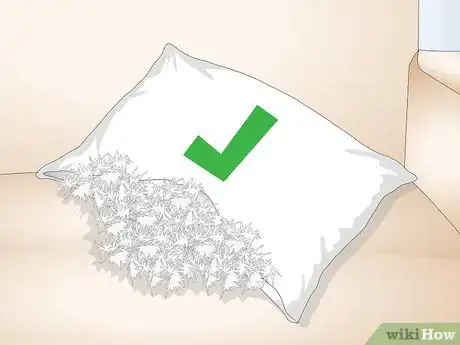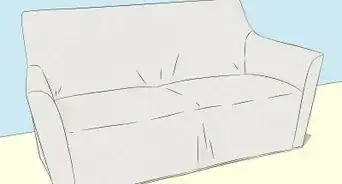This article was co-authored by Karen Parziale. Karen Parziale is a Home Stager, Home Organizer, and the Founder of The Real Estate Staging Studio based in Hoboken, New Jersey. Karen has over 15 years of home staging and decorating experience and has staged over 5,000 homes. She specializes in project management, space planning, material selections, and builder, architect, and client relationships.
This article has been viewed 41,009 times.
Adding throw pillows to your sofa is an easy and inexpensive way to breathe new life into your living room or bedroom. It can, however, be overwhelming with all the choices out there. Here are a few tips to consider to help you find your way and have fun creating a new look with the simple addition of pillows.
Steps
Picking Out Your Pillows
-
1Choose pillows with complementary colors for a bold and vibrant look. Pick 2 colors, opposite of one another on the color wheel, that are already present in your room and stick to them when choosing pillows. Remember that you can choose different shades of your complimentary colors. [1]
- Orange and blue is the most common complementary color pairing.
- Red and green are opposites on the color wheel.
- Yellow and purple is the boldest combination of complementary colors.
- Use black and white if you already have a lot of colors going on in your space.
- You can also choose your pillows according to the time of the year, with darker and earthy tones for winter and paler tones for summer and spring.[2]
-
2Choose neutral, earthy tones in your pillows to tone a room down.[3] Neutrals have a calming effect and leave an impression of sophistication. They can accentuate an already neutral room or bring balance to a brightly colored sofa or room. Choose either warm neutrals or cool neutrals, rather than combining them both.[4]
- Warm neutrals are in the brown family with undertones of red, orange, and yellow.
- Cool neutrals are in the gray family with undertones of blue and green.
- Neutrals can include natural fiber pillows, like jute, and navy blue.
Advertisement -
3Select pillows in shades of one color for a playful but modern look. Look around the room for a color that you'd like to draw attention to and buy pillows in varying shades of that color. Take a picture or sample of the color with you when you go shopping.[5]
- Your favorite painting features a large tree. Choose pillows in shades of green to draw your guests' eyes to that same painting.
- The rug under the coffee table has a deep color of plum that you've always wanted to bring out. Choose pillows in shades of that same plum to give your rug its due.
- Use a color that's already in your space to make the room feel cohesive. They don't have to exactly match as long as they are the same hue.
-
4Pick pillows in all solid colors if you want to draw attention to your sofa. Choose bold complimentary colors to enhance the centerpiece effect. Solid colors are also a good choice if there is already a lot of patterns and prints in the room.
- Use a variety of solid colors or keep it monochromatic. For example, use various shades of blue.
-
5Combine large prints, small prints, and solids to create a sense of depth. Generally speaking, the larger prints should be on the outside of the sofa, with the smaller prints and solids closer to the middle.
- Large prints have bolder designs and less repetition.
- Small prints have small to tiny designs and have more repetition.
-
6Choose one special pillow as a focal point. Find a pillow with an ornate design you like, or a word, letter, or image and place this pillow in the middle of the sofa, with several complimentary pillows on each side, for a personalized look.
- Look for pillows that have different textures, such as ropes or beads.
- Have a focal pillow based on the season. You may have a Christmas-themed pillow in the winter or a flowery pillow for spring.
-
7Choose pillows in a variety of shapes and fabric types to create an eclectic look. Consider shapes other than square and fabrics with a tactile appeal. These variations will add texture to your arrangement. Have fun and mix it up.[6]
- Velvet is classic and regal in bold primary colors and can soften a look in pastels.
- Cottons and linens are crisp and modern.
- Faux fur gives the room a cozy den-like feel.
- Oblong, rectangular, and circular pillows can add whimsy to your look.
-
8Look for pillows with partial feather or down inserts. The look of your pillows is not their only contribution. Ideally, they are supportive and comfortable as well. Avoid all-foam inserts as they provide very little support.[7]
Arranging Your New Pillows
-
1Scale pillows to your furniture. If you have a large, overstuffed couch, choose large pillows. If you have a small, antique couch, choose smaller pillows.
-
2Determine the number of pillows you want. About 4 to 6 pillows on a sofa are typical. Don't overdo it. Remember, you want your couch to remain usable for you and your guests.
- Use an even number of pillows for a traditional look, 1, 2 or 3 on each side.
- If you are after a more eclectic look, choose an odd number of pillows and have different amounts on each side of the couch.
-
3Place the largest pillows on the outside of the sofa. Arrange the rest of the pillows in descending order of size. If you want to highlight one pillow, place it in the middle of the sofa and bracket with 2 complementary pillows on each side. Put the largest pillows in the back, and stack them so the smallest pillow is in front.
-
4Keep the pillows in a symmetrical arrangement for a traditional look. Typically, pillows are bought in pairs. Each pillow in the pair occupies the same place on the sofa as its mate, but on the opposite side.[8]
-
5Choose asymmetrical placement for a fun, bohemian look. Throw tradition out the window and place pillows however they please your eye. Play around with a different number of pillows on each side of the sofa. Place pairs in differing spots or don't use pairs at all!
References
- ↑ https://www.ballarddesigns.com/howtodecorate/2015/07/guide-to-choosing-throw-pillows/
- ↑ Karen Parziale. Home Stager & Interior Designer. Expert Interview. 21 April 2020.
- ↑ Karen Parziale. Home Stager & Interior Designer. Expert Interview. 21 April 2020.
- ↑ https://www.ballarddesigns.com/howtodecorate/2015/07/guide-to-choosing-throw-pillows/
- ↑ https://www.ballarddesigns.com/howtodecorate/2015/07/guide-to-choosing-throw-pillows/
- ↑ https://www.realsimple.com/home-organizing/decorating/decorating-throw-pillows#traditional-look
- ↑ https://www.ballarddesigns.com/howtodecorate/2015/07/guide-to-choosing-throw-pillows/
- ↑ https://www.realsimple.com/home-organizing/decorating/decorating-throw-pillows#traditional-look



